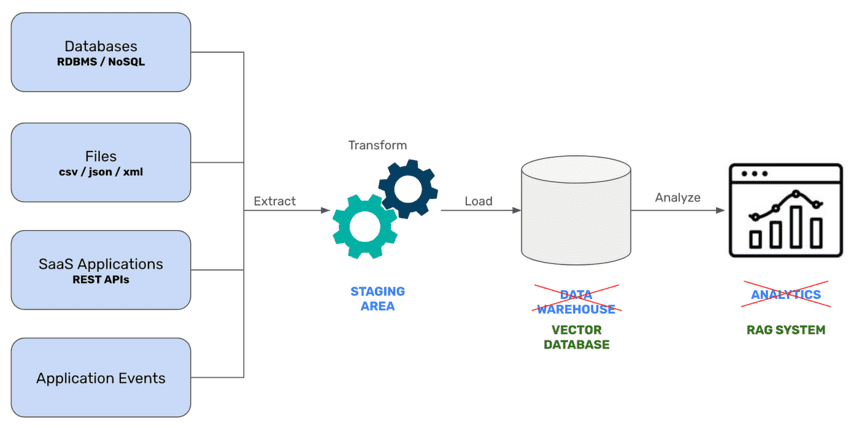
Transforming Data Warehouses into Dynamic Knowledge Bases for RAG
Title
Transforming Data Warehouses into Dynamic Knowledge Bases for RAG
Author
1. Gerry Hosea,
Student, University of North Sumatra, Medan, Indonesia
2. Hari Sudrajat,
Developer, TRT Solution Limited, Indonesia
Abstract
It is necessary to include data warehouses in contemporary data processing frameworks to provide comprehensive support for efficient decision-making procedures. This study aims to evaluate the exploitation of data warehouses as a knowledge base inside a Retrieval-Augmented Generation (RAG) model. This model combines retrieval mechanisms with generative models to improve information retrieval and response generation in artificial intelligence systems. Several necessary procedures are the subject of this research. These procedures include the preparation of data via the use of Databricks, the production of online tables, and the transformation of these tables into embeddings. Databricks offers a robust data engineering platform, enabling practical data input, cleaning, and structuring into Delta tables. This is followed by building online tables, making it easier to get data quickly. They are then converted into embeddings, which can capture the semantic substance of the data. These online tables are subsequently altered. The embeddings are kept in a repository, and the RAG model makes use of them to create replies consistent with the context in which they are being used. RAG models can efficiently harness enormous data repositories, as shown by the findings of this research, which reveal considerable increases in the speed at which data is retrieved and the precision of responses. By implementing best practices and using Databricks' capabilities, businesses can improve their AI-driven decision-making processes. This approach is advantageous for various purposes, including customer assistance, data analysis, and strategic planning. By doing more study in the future, it will be possible to investigate the applicability of this technique across a variety of domains and the incorporation of sophisticated generative models to enhance performance.
Keywords
Conclusion
Improve information retrieval and response generation using a Retrieval-Augmented Generation (RAG) model that employs data warehouses as a knowledge base. This study highlights the importance of structured approaches and embedding techniques in using massive datasets. We have shown significant improvements in response precision and retrieval velocity by preprocessing data in Databricks, generating online tables, and transforming these tables into embeddings.
Data is cleaned, organized, and easily retrievable when automated ETL pipelines, streamlined data intake, and Delta tables for data management are all in place. Improving the RAG model's accuracy and relevance to context is made possible by converting online tables into embeddings, which contain the data's semantic substance.
Databricks' collaborative development environment and scalable computing capabilities make data preparation and embedding conversion more efficient. In addition, the RAG model's overall performance is enhanced by the platform's powerful analytics and machine learning capabilities, which help create high-quality embeddings.
Benefiting greatly from AI-driven decision-making, this method has many potential applications, such as customer assistance, data analysis, and corporate intelligence. With Databricks, you can be confident that data is secure and that comply with all industry regulations.
The use of more sophisticated generative models to further enhance performance may be investigated in future studies, as can the application of this technique across several fields. By improving and expanding upon these methods, RAG models will become an essential resource for tapping into massive data stores in various contexts.
Author Contrubution
All study-related tasks, from conception and design to data analysis and manuscript creation, were solely managed by the author.
Funding
This research, including authorship and publication, did not receive any specific grant from funding agencies in the public, commercial, or non-profit sectors.
Conflict of Interest
All authors declare the absence of any conflicts of interest.
Data Sharing Statement
Data sharing is not applicable to this article.
Software And Tools Use
No specific software or tools were used in the research.
Acknowledgements
I appreciate the support and expertise of everyone who contributed to this research and manuscript writing, as well as the insightful comments from anonymous reviewers.
Corresponding Author
Gerry Hosea
University of North Sumatra, Medan, Student, Indonesia
Hari Sudrajat
TRT Solution Limited, Developer, Indonesia
Copyright
Copyright: ©2026 Corresponding Author. This is an open access article distributed under the terms of the Creative Commons Attribution License , which permits unrestricted use, distribution, and reproduction in any medium, provided the original author and source are credited.
Hosea, Gerry, and Sudrajat, Hari. “Transforming Data Warehouses into Dynamic Knowledge Bases for RAG.” Scientific Research Journal of Science, Engineering and Technology, vol. 2, no. 1, 2024, pp. 5-10, https://isrdo.org/journal/SRJSET/currentissue/transforming-data-warehouses-into-dynamic-knowledge-bases-for-rag
Hosea, G., & Sudrajat, H. (2024). Transforming Data Warehouses into Dynamic Knowledge Bases for RAG. Scientific Research Journal of Science, Engineering and Technology, 2(1), 5-10. https://isrdo.org/journal/SRJSET/currentissue/transforming-data-warehouses-into-dynamic-knowledge-bases-for-rag
Hosea Gerry and Sudrajat Hari, Transforming Data Warehouses into Dynamic Knowledge Bases for RAG, Scientific Research Journal of Science, Engineering and Technology 2, no. 1(2024): 5-10, https://isrdo.org/journal/SRJSET/currentissue/transforming-data-warehouses-into-dynamic-knowledge-bases-for-rag
1785
Total words644
Unique Words87
Sentence19.551724137931
Avg Sentence Length0.36183879976983
Subjectivity0.072068193619918
PolarityText Statistics
Viewed / Downloads
Total article views: 44 (including HTML, PDF, and XML)| HTML | XML | Total | |
|---|---|---|---|
| 29 | 12 | 3 | 44 |
Viewed (geographical distribution)
Thereof 44 with geography defined and 0 with unknown origin.